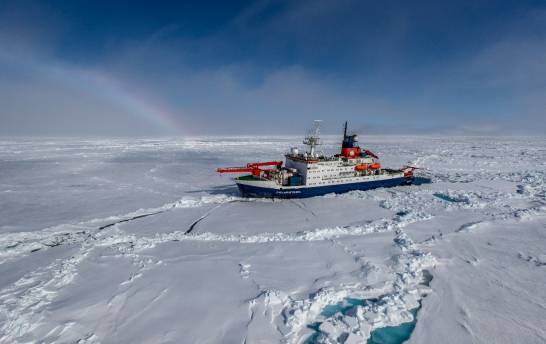An international team, made up of researchers from 12 countries and led by scientists from the Higher Council for Scientific Research (CSIC), has demonstrated the ubiquitous presence of iodine in the Arctic atmosphere.
The results, published in the latest issue of the journal Geoscience of Naturereveal that the chemical reactions of ozone with iodine are the second cause of surface ozone depletion in the arctic atmospheresecond only to ozone depletion by photolysis.
Researchers from the Instituto de Físico-Chemica Rocasolano (IQFR-CSIC) participated in the Mosaic mission (Multidisciplinary Drift Observatory for the Study of the Arctic Climate), the largest scientific expedition to the Arctic in history.
Aboard the icebreaker Polarsten, which was trapped in the Arctic Ocean ice for a year, 600 researchers from 19 countries analyzed in a rotating way the environmental changes related to global warming.
O ozone depletion in the stratosphere (between 15 and 50 kilometers in altitude) is well known. The main causes are the chlorofluorocarbons emitted by human activities. These are chemical substances associated with the use of refrigeration systems, insulating foams or air conditioners, among others, that weaken the mantle of the stratosphere, where 90% of the ozone present in the atmosphere is concentrated.
However, short periods of time have also been observed in which ozone depletion reduces its levels to a minimum in the troposphere, located between 0 and 10 kilometers above the Earth’s surface in polar regions, and where 10% of atmospheric ozone.
“Until now, it was assumed that these episodes of surface ozone depletion were mainly caused by chemical reactions of a single type of halogen compound, bromine, which is emitted into the atmosphere from the surface ice of the regions polar regions”, explains the IQFR- Researcher and coordinator of the CSIC Alfonso Saiz Lopez.
The role of bromine and iodine in the arctic atmosphere
Different bromine, the effect of another halogen, iodine, is generally not included in environmental models due to uncertainty about its presence in the Arctic atmosphere. However, observations made on the Mosaic expedition during 2020 revealed the presence of iodine in a wide region of the Arctic Ocean.
Using an atmospheric model, the researchers showed that catalytic reactions with iodine represent the second leading cause of ozone depletion. It would be ahead of that caused by the reaction of ozone with bromine and behind the main cause of ozone depletion in the troposphere: photolysis, that is, the destruction of an ozone molecule by ultraviolet-visible radiation.
The results presented by the researchers question decades of the established paradigm on the causes of surface ozone depletion in the Arctic region.
The study, framed in the project climahalalso highlights that oceanic iodine emissions are increasing due to anthropogenic pollution and the retreat of the Arctic ice sheet as a result of global warming.
Núria BenaventIQFR-CSIC researcher and first author of the work, highlights: “Our results indicate that the chemistry of iodine may play an increasingly important role in the depletion of Arctic ozone throughout this century, and should be considered in models of the climate of the Arctic for a correct quantification of ozone concentration in the Arctic atmosphere”.
